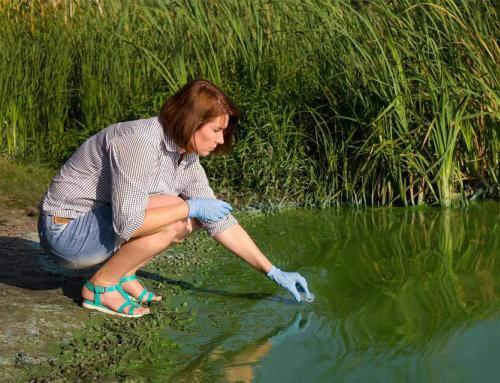 Cyanobacteria is an organism that over two billion years ago played a key role in turning a poor oxygen planet into the oxygen-rich atmosphere that we live in today. These organisms live and thrive in photosynthesis. That is the ability to take in sunlight and turn it into sugars and use the byproduct to produce oxygen.
Cyanobacteria is an organism that over two billion years ago played a key role in turning a poor oxygen planet into the oxygen-rich atmosphere that we live in today. These organisms live and thrive in photosynthesis. That is the ability to take in sunlight and turn it into sugars and use the byproduct to produce oxygen.
You can find cyanobacterial all over the world. It is just abundant today as it was billions of years ago. Cyanobacterial is often the reason your pond takes on a blue-green color. If you were to look at a water sample from a pond with cyanobacterial you would see small particles floating around. If you were to look closer at these particles, you would see small colonies clusters. In warm summer months, those particles can multiply rapidly. When they multiply into large numbers they can be seen with the naked eye. When the numbers get dense enough, we call this a bloom.
Related: Cyanobacteria Harmful Algae Blooms Can Kill Your Pet
These blooms can give off a smell of rotting plants. Cyanobacteria usually multiply and bloom when the water is warm, stagnant, and rich in nutrients (phosphorus and nitrogen) from sources such as fertilizer runoff or septic tank overflows.
These cyanobacterial blooms not only look bad in your pond but can also be harmful to humans. Depending on your exposure, and what type of cyanobacteria it is the effects on humans can range from abdominal pain, nausea, vomiting, headache, diarrhea, sore throat, blistering around the mouth, and pneumonia. In some cases, people have experienced neurologic symptoms, including numbness, tingling, burning sensation, drowsiness, salivation, and speech disturbances.
Cyanobacterial Blooms: Effective Testing & Treatment
Because of how harmful cyanobacterial algae can be to aquatic life, pets, children, and adults. If you suspect your pond may have cyanobacterial blooms it is best to get it tested. National Pond Services makes this process easy through a specialized test kit.
Because there are many different types of cyanobacterial, knowing what you have makes it easier to recommend what you need to treat the problem. Often the cyanobacterial right treatment kits can quickly get rid of the cyanobacterial.


